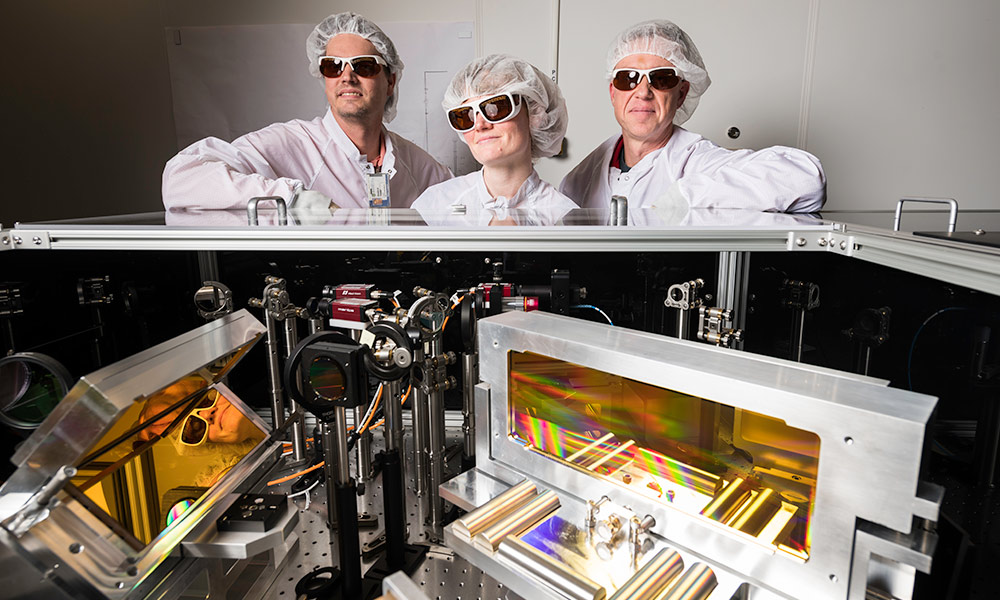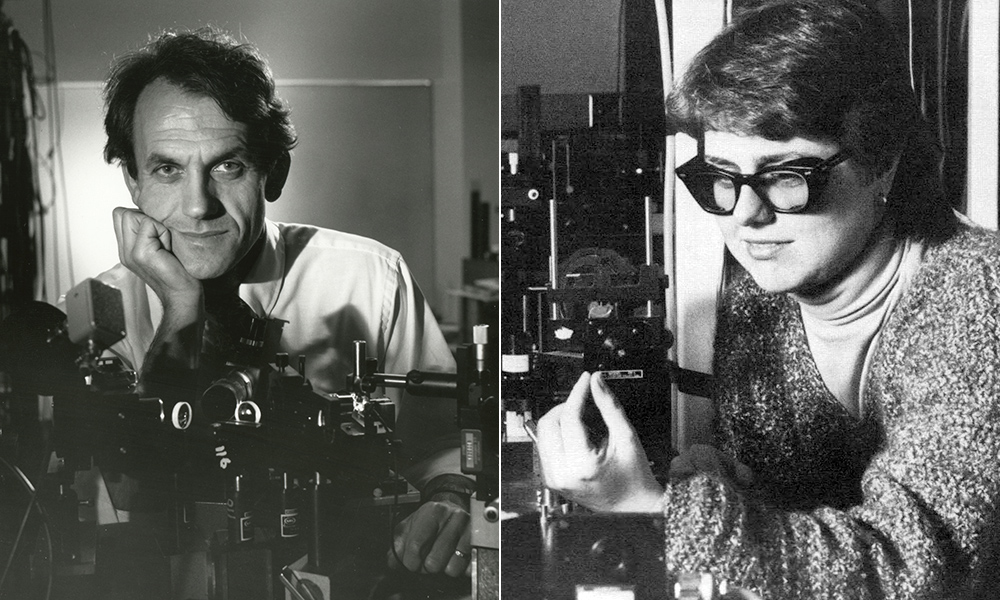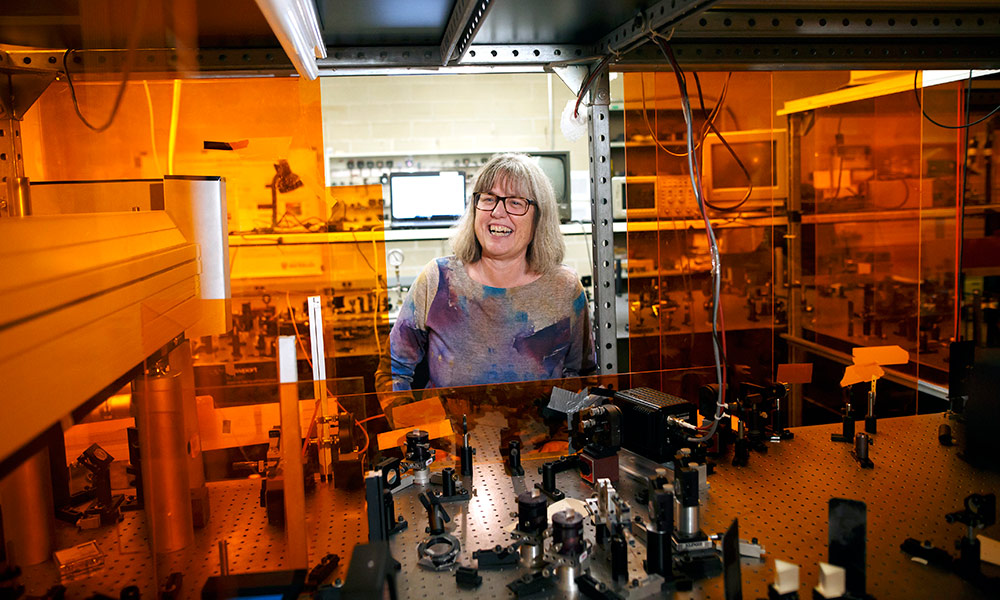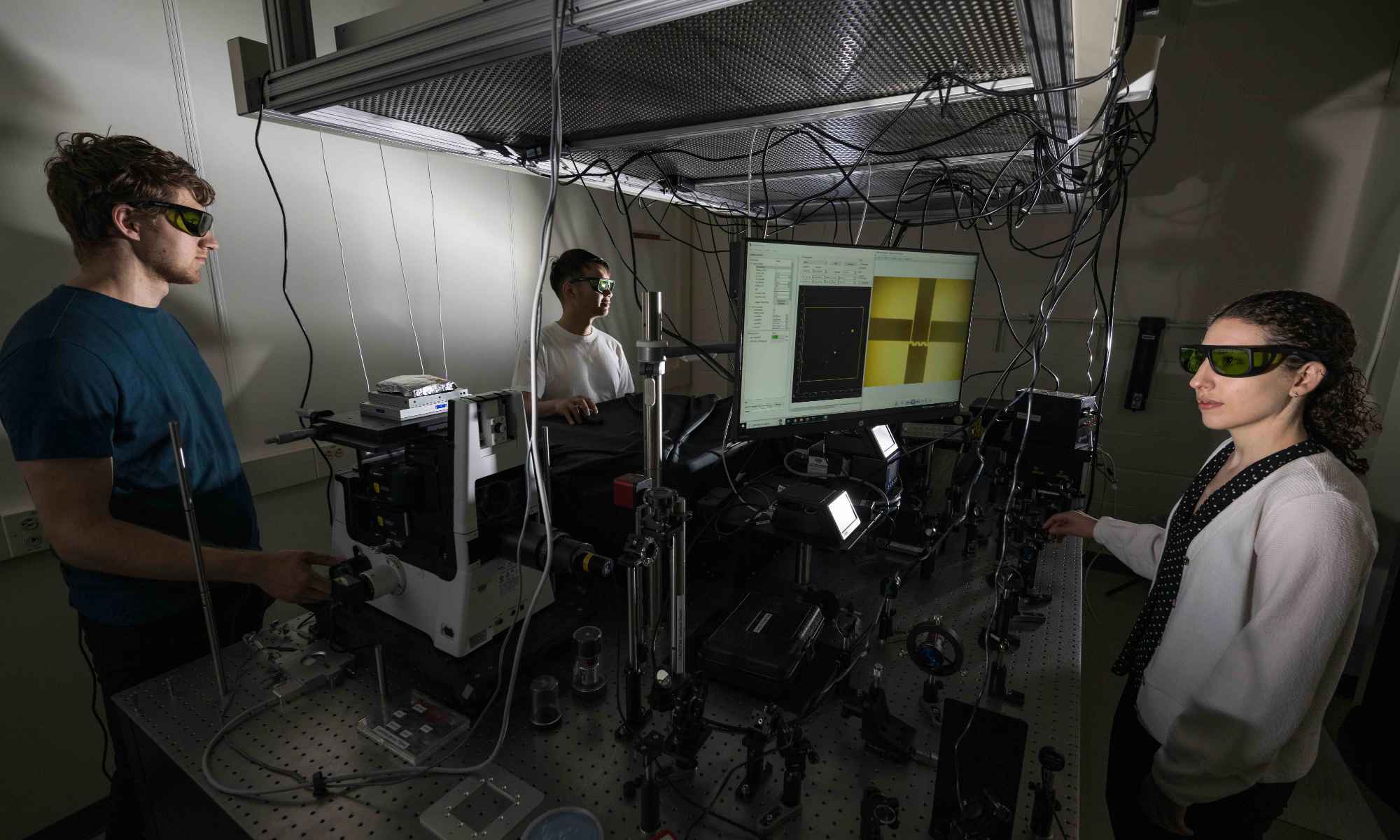When lasers were first demonstrated in 1960, many people speculated about their potential applications. Now, “lasers are everywhere,” says Donna Strickland ’89 (PhD). They are used to study gravity and black holes, to manufacture parts in cell phones, and to conduct medical procedures like Lasik eye surgery.
In a video for WIRED, Strickland, a professor of physics at the University of Waterloo in Ontario, Canada, and a 2018 recipient of the Nobel Prize in Physics, explains the inner-workings and importance of lasers to five different people: a child, a teenager, a college student, a graduate student, and, finally, to an expert. That expert is Mike Campbell, director of the University of Rochester’s Laboratory for Laser Energetics (LLE).
In October 2018, Strickland became the third woman ever to receive the Nobel Prize in Physics, for work she conducted at the LLE as a graduate student, which revolutionized the field of high-intensity laser physics. She shared the prize with Gérard Mourou, a former engineering professor and scientist at the LLE and Strickland’s PhD advisor during the time they pioneered “chirped-pulse amplification.” Known as CPA, this work was the basis of Strickland’s 1988 PhD dissertation. CPA has since been used to develop lasers as high-powered tools for new medical, scientific, and commercial applications.
Starting by answering the question “What is a laser?” for a nine-year-old child, Strickland moves through progressively more complicated concepts in optics, photonics, and high-intensity laser physics in the video. She ends on a discussion with Campbell, whom she met in 1991 when the two worked together at Lawrence Livermore National Laboratory in California.
“After you [Strickland] demonstrated CPA, I was intrigued by how powerful we could make lasers, and how lasers are wonderful because they allow you to take energy and compress it in space and time,” Campbell says in the segment.
The two discuss the peak power of lasers, the excitement of conducting photonics research, and future plans for a powerful new laser set up at the LLE.
Read more

In the lab where it happened: Nobel science in pictures
Today’s Rochester researchers are using science developed at the Laser Lab to develop the next generation high-power lasers.

Love at first light
Donna Strickland ’89 (PhD), a self-described “laser jock,” receives the Nobel Prize, along with her advisor, Gérard Mourou, for work they did at the Laboratory for Laser Energetics.

Rochester’s Nobel laureates
Rochester alumni and faculty have to date received a total of 12 Nobel Prizes, across a range of categories that includes physics, medicine or physiology, and economics.




